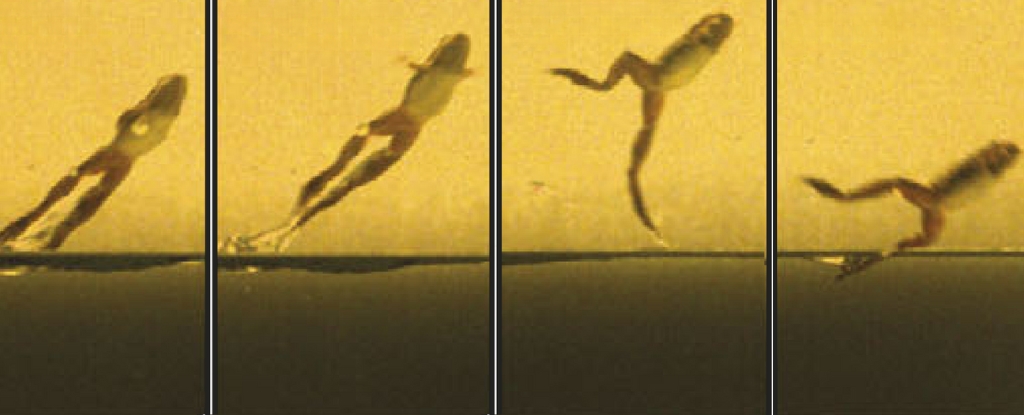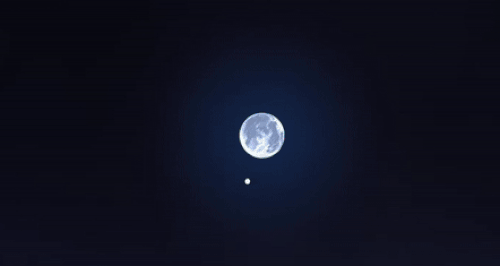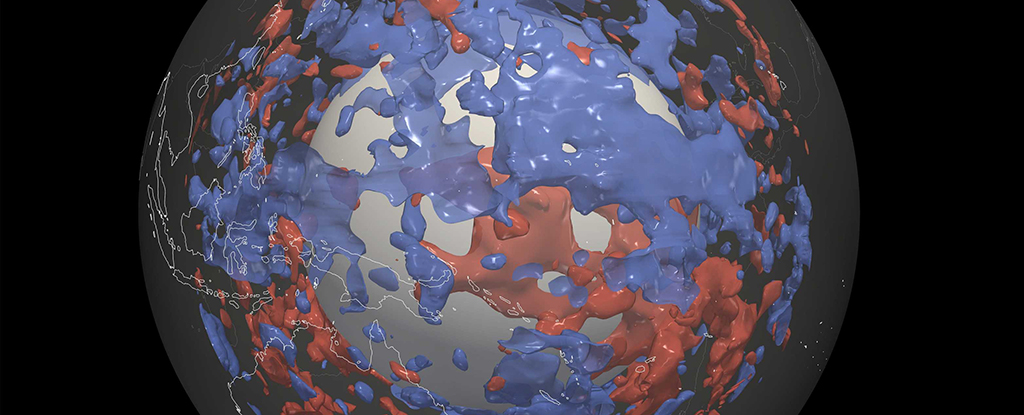NC State (Robotic) Swimmer Breaks World Record
Researchers from NC State, UVA, and UC Riverside teamed up to create the world’s fastest swimming soft robot, breaking their own record from two years ago.
SwimSwam (swimswam.com)
• Published 30 hours ago
(trending 1 hours ago)
New interim leaders for NASA astrophysics and planetary science
Retirements and reassignments have led to a reshuffling of leadership in part of NASA’s Science Mission Directorate.
SpaceNews (spacenews.com)
• Published 40 hours ago
(trending 1 hours ago)
Hilarious 'Fast-Moving Belly Flop' Lets Frogs Walk on Water
Frogs that seem to skitter across the surface of water as though it were solid land use a hilariously unexpected way to do so.
ScienceAlert (www.sciencealert.com)
• Published 35 hours ago
(trending 1 hours ago)
What’s hotter than the hottest stars in the Universe?
Here in our Universe, stars shine brightly, providing light and heat to planets, moons, and more. But some objects get even hotter, by far.
Big Think (bigthink.com)
• Published 34 hours ago
(trending 1 hours ago)
The Riddle Surrounding Red Supergiant Stars
New ground- and space-based infrared observations are giving astronomers a better handle on the true populations of red supergiant stars like Betelgeuse and Antares.
Forbes (www.forbes.com)
• Published 31 hours ago
(trending 1 hours ago)
NASA claims: China could slow Earth’s rotation with a single action
Did you know that the Three Gorges Dam could actually influence Earth's rotation? Discover the surprising science behind this massive structure and its unexpected effects on our planet’s dynamics.
Indiandefencereview.com (indiandefencereview.com)
• Published 28 hours ago
(trending 1 hours ago)
The Full Wolf Moon 'eats' Mars on Jan. 13. Here's how to see it
If you are fortunate to live in the occultation zone and the weather cooperates, this upcoming event is one that really should not be missed.
Space.com (www.space.com)
• Published 28 hours ago
(trending 1 hours ago)
Mars takes center stage in the sky
January is due to offer a multitude of cosmic gemstones, including the moment when Mars reaches its closest point to Earth. Here’s what’s in store this month.
WTOP (wtop.com)
• Published 41 hours ago
(trending 3 hours ago)
High pressure brings dry, sunny weather to New England. Wolf Moon offers celestial treat tonight.
The first full moon of 2025, January's Wolf Moon, peaks Monday night.
The Boston Globe (www.bostonglobe.com)
• Published 31 hours ago
(trending 3 hours ago)
Do Faster-than-Light Particles Exist? Tachyons, Black Holes, and the Limits of Faster-Than-Light Physics
Are there particles that can move faster than light? Harvard astronomer Avi Loeb explores this question and the mysterious role of tachyons.
Thedebrief.org (thedebrief.org)
• Published 47 hours ago
(trending 4 hours ago)
Scientists Say They've Figured Out What Turned the Sun Blue
New research finally solves the nearly two hundred year old mystery of which volcano caused the Sun to turn blue with its epic eruption.
Futurism (futurism.com)
• Published 47 hours ago
(trending 4 hours ago)
NASA Says Spacecraft Made Closest-Ever Pass to Sun
NASA says, that on December 24, the Parker Solar Probe got closer to the sun than any past exploration vehicle has. The spacecraft, launched in 2018, has been studying the sun’s corona and the solar wind in great detail.
VOA News (learningenglish.voanews.com)
• Published 43 hours ago
(trending 4 hours ago)
Physicist Claims to Have Solved Famous Grandfather Paradox!
What if you could travel back in time without the risk of irreversibly altering the future? Time travel, often relegated to the realm of science fiction, ... Continue Reading →
Glassalmanac.com (glassalmanac.com)
• Published 42 hours ago
(trending 4 hours ago)
BepiColombo Just Completed its Sixth Flyby of Mercury. Here are the Best Images
It’s not unusual for space probes to complete gravitational flyby manoeuvres en route to their destination. It’s a bit more unusual when the flyby is at the destination planet. ESA’s BepiColombo spacecraft is manoeuvring around Mercury into its final orbit. W…
Universe Today (www.universetoday.com)
• Published 41 hours ago
(trending 4 hours ago)
Strange Blobs Found Deep Inside Earth Where No Such Blobs Should Exist
Waves that ripple from Earth's centre can be used to sense what it's made of, and where those materials might be found.
ScienceAlert (www.sciencealert.com)
• Published 35 hours ago
(trending 4 hours ago)
Quantum Physics Just Got Even Stranger: Meet the Mysterious Paraparticles
Rice University physicists have mathematically unveiled the possibility of paraparticles, which defy the traditional binary classification of particles into bosons and fermions. Their research, which delves into the realms of abstract algebra and condensed ma…
SciTechDaily (scitechdaily.com)
• Published 32 hours ago
(trending 4 hours ago)
Carbon storage mystery emerges in the Southern Ocean
New research by the UK's National Oceanography Centre reveals hidden ocean processes and challenges the role of diatoms in carbon storage.
Earth.com (www.earth.com)
• Published 37 hours ago
(trending 2 hours ago)
Great Lakes Started Forming Before North America Existed
Their start dates back 300M years to the time of Pangaea, researchers say
Newser (www.newser.com)
• Published 30 hours ago
(trending 2 hours ago)
A rare look at NASA’s next sharp-eyed space telescope
NASA's Roman Space Telescope is preparing for launch in 2027, with a mission to study distant galaxies and explore dark energy.
The Washington Post (www.washingtonpost.com)
• Published 27 hours ago
(trending 2 hours ago)
Earth’s Air War: Yale Study Reveals Why Complex Life Took So Long To Emerge
A Yale study reveals that elevated marine iodine concentrations disrupted the stabilization of Earth’s ozone layer, delaying complex life for over 2 billion years. This finding challenges the notion that evolution alone caused the delay, highlighting iodine’s…
SciTechDaily (scitechdaily.com)
• Published 27 hours ago
(trending 2 hours ago)


















